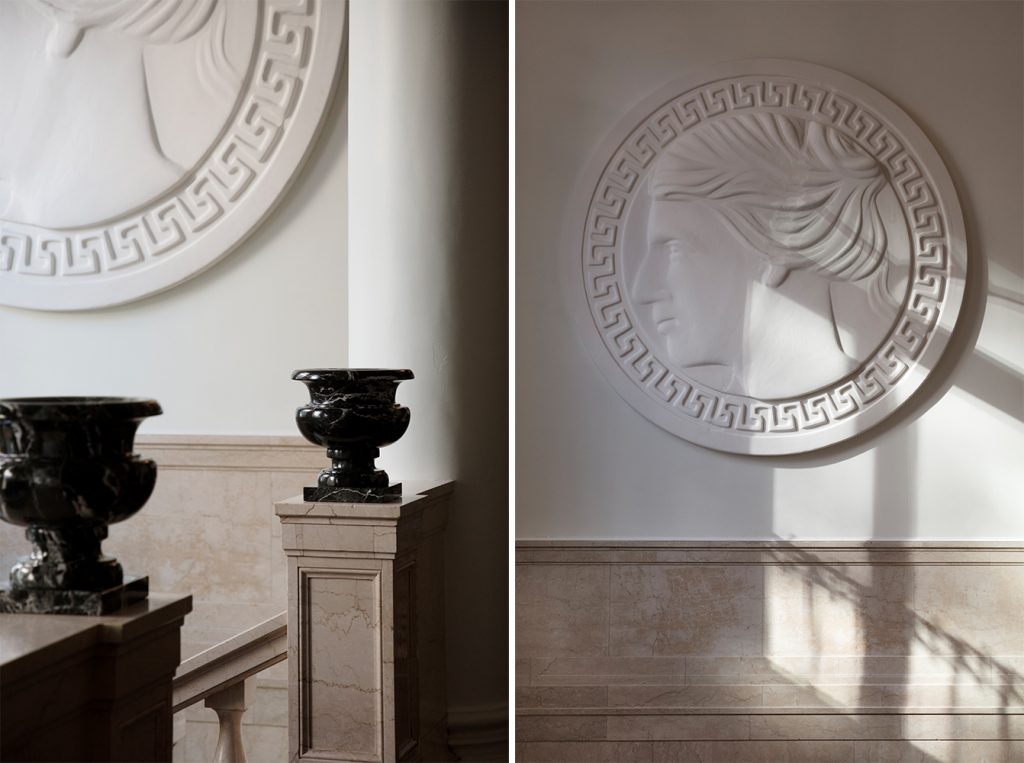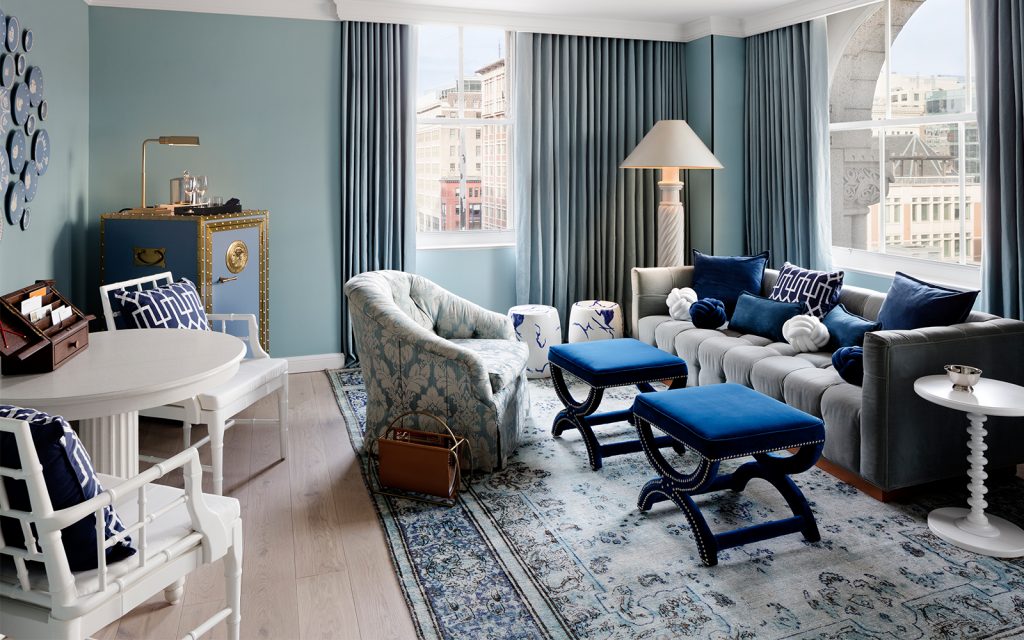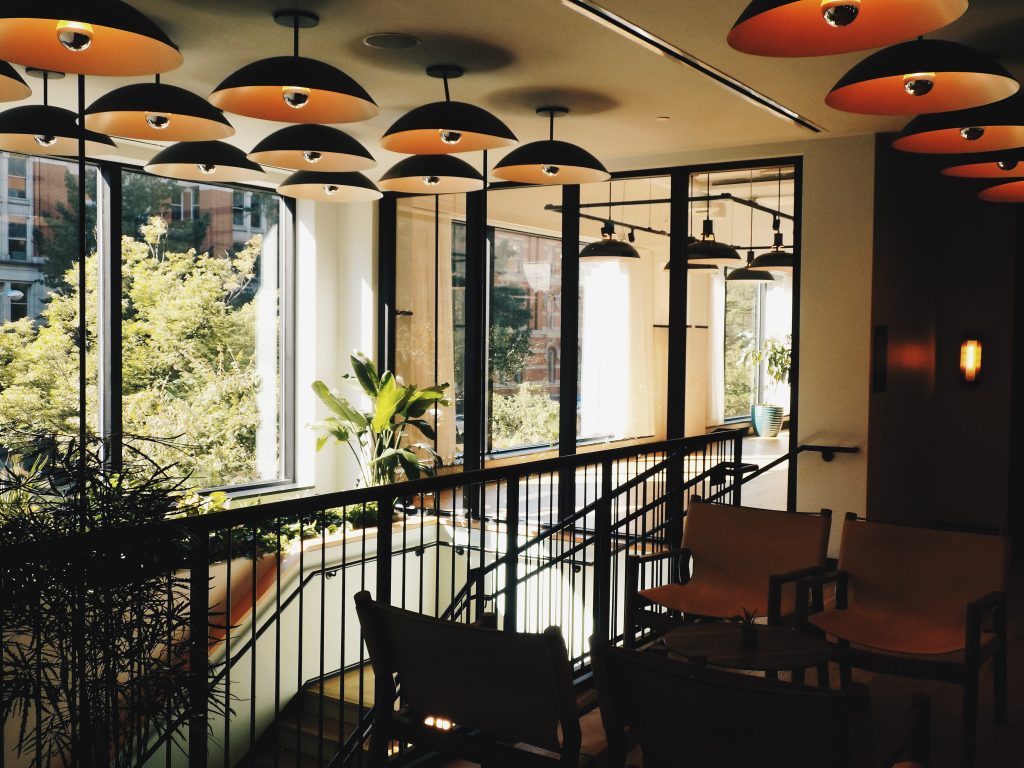Upscale Hospitality at the Riggs Washington DC Hotel
In the shadow of the Capitol, contemporary luxury accommodation that reference a storied past

Situated inside the illustrious, nationally registered Riggs National Bank building, which was built in 1891, the aptly named Riggs Washington DC hotel (open as of last week) nods to the property’s storied foundation without succumbing to kitschiness or architectural constraint. With 121,000 square feet to work with, the Lore Group (known for the Pulitzer Amsterdam and Sea Containers London) took into consideration how each space impacts the other and worked to emphasize the original architecture’s more awe-inspiring design features—all while injecting a bit of opulence, of-the-era flair, and creative director Jacu Strauss‘ passion for thrifting.

The designers and developers at the Lore Group, though passionate, are quick to explain that DC is an incredibly complex market in which to open a hotel. Atypical as a metropolitan, the city’s most prominent buildings service governmental affairs exclusively. As such, properties are careful not to be too exuberant while being considerate of the fact that a large percentage of their potential guests, diners and drinkers will come to escape their day-to-day.
At Riggs, the prestige of politics is addressed and its omnipresence acknowledged, but the property doesn’t employ tired homages or (as tempting as it may be) references to any administration. Strauss favors behind-the-scenes stories, instead. The elegant seating arrangements, 15-foot paper flower installation, and lighthearted hues put visitors at ease but transport them, too.

“We want to make sure everything is sort of unified in this building,” Strauss says, referencing the sheer size of the property. Inside there are 181 guest rooms, a restaurant and café (Café Riggs), a rooftop, gym, lobby space, basement bar named Silver Lyan (by White Lyan, Super Lyan, and Lyaness owner Ryan Chetiyawardana) and private dining spaces. “Whether you’re in your room or you’re here [Café Riggs] or there [Silver Lyan], you feel and you know you’re in the same building.” Strauss adds, “The biggest challenge for us was working with the scale of the space. It’s really big so we want to celebrate that grandeur, but also wanted to make sure that it didn’t feel too intimidating or too austere.”

Strauss and Lore Group’s CEO Billy Skelli-Cohen stumbled upon the property when it came to market a few years ago as a 17-year-old Courtyard by Marriott with an attached sports-themed bar. DC wasn’t in their vision, neither was reimagining a franchised hotel. Still, it seemed like a fit: a city that’s a bit misunderstood and experiencing creative and social growth, and a property poised for repurposing.

Shedding the layers of unfavorable branding and design revealed a uniquely expressive interior accented with Richardsonian Romanesque-style details: stark pillars, ornate ceilings, brass detailing and a vault. They date back to when the building was an operational bank—one that loaned the US government the funds to purchase Alaska and claimed a few presidents as patrons. Other original bank features were replicated but with care for how they’d be perceived. Nods to Juno Moneta, the Roman goddess of money, abound. The teller-style front desk harkens back to the space’s transactional history.

The property also spotlights lesser-known figures in the USA’s history in special guest suites designed to embody the personalities and legacies of First Ladies Ida McKinley, Angelica Van Buren, Louisa Adams, and Caroline Harrison. “It was us trying not to ignore the context—The White House is literally just down the road—because I remember people coming up to me and asking, ‘Are you going to have Presidential Suites?’ And I thought, ‘Yeah, no, I don’t want to do a Presidential Suite,’ but The White House mention was always an idea. Instead, we did First Lady. All of these people are very important, and I love that it’s not the obvious choices,” Strauss explains.

“I know someone who works at The White House, for The White House Historical Association, that looks after their collection. So I kind of dove deep on First Ladies, and I found four that no one really knows too much about. For each, there was a quirk or a characteristic that we took and kind of turned upside down, thus creating something quite abstract,” Strauss says. For Ida McKinley’s suite, Strauss emphasized her affection for fresh flowers. “She loved flowers. She loved them so much she would keep a bouquet on her lap so that she didn’t have to shake anyone’s hand.”

The Caroline Harrison Suite uses blues and bone whites to imitate porcelain’s iconic hues, and features an expansive collection of decorative porcelain items from antiques shops throughout DC, Maryland and Virginia. Louisa Adams’ eponymous room references her love for music and her advocacy for musical performances at official White House events—a baby grand piano occupies a corner of the room and stark artistic homages to the keys’ colors contrast bright yellow walls. Lastly, Angelica Van Buren’s emphasizes her more extravagant taste (“She appreciated the finer things,” Strauss says) by employing gold-plating and lush red decor.
“It’s fun to do for us, but it also adds something interesting to our hotel,” Strauss tells CH. “We’re just interpreting the concept, we’re not recreating their space. But it’s still sentimental. There’s still an emotional connection.”
Hero image by Jennifer Hughes, Images courtesy of Riggs Washington DC












